- RC bishopry / bureaucracy part of the swamp
- Borders somehow immoral
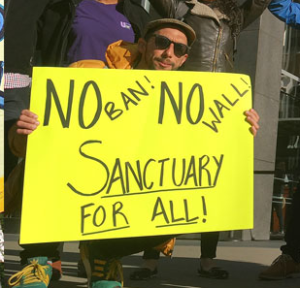 “A Mexican immigrant on Thursday was found not guilty…”
“A Mexican immigrant on Thursday was found not guilty…”
(WSJ lede in the story of the 5 times deported, 7 times convicted of felonies, illegal immigrant, Jose Ines Garcia Zarate; a San Francisco jury apparently felt the death of Kate Steinle at Senor Karate’s hands was no big deal.)
A “Mexican migrant”? No! An oft-deported ILLEGAL IMMIGRANT! That’s what “Jose” was and is!

Not murder not manslaughter but rather “felon in possession of a fire arm”, a felony. Now death inflicted in conjunction with a felonious act is not murder? No worry. Rack up another nickle-dime felony get deported, come back.
HOW MANY CATHOLIC BISHOPS WERE ON THAT JURY?
“The U.S. bishops do not support policies that prioritize law enforcement ahead of other aspects of immigration reform. According to an August 2013 document posted on the U.S. bishop’s website, “The United States Conference of Catholic Bishops (USCCB) opposes ‘enforcement only’ immigration policies and supports comprehensive immigration reform.”
A May 2017 story in the National Catholic Register by Brian Fraga:
Trump vs. Sanctuary Cities: Catholic Leaders Push Back
With California as the flash point, the U.S. bishops and immigration advocates speak out against the president’s plan to reduce these communities’ federal funding.
SAN FRANCISCO — In San Francisco, a sanctuary city since 1989, people who are in the United States without legal immigration documents are feeling more anxious than ever that they or their loved ones will soon be rounded up and deported, says Lorena Melgarejo.
“Things feel the same way, but the amount of fear is maybe a hundredfold,” Melgarejo, an immigration advocate for the Archdiocese of San Francisco, told the Register, although she reported not having seen any recent signs of stepped-up immigration enforcement by the federal government.
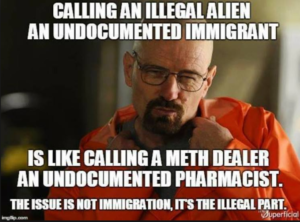 MELGAREJO IS NOT AN “IMMIGRATION ADVOCATE”! SHE’S AN “ILLEGAL IMMIGRATION ADVOCATE”! That is flat out dishonesty for the Arch Diocese to portray him otherwise!
MELGAREJO IS NOT AN “IMMIGRATION ADVOCATE”! SHE’S AN “ILLEGAL IMMIGRATION ADVOCATE”! That is flat out dishonesty for the Arch Diocese to portray him otherwise!
But with President Donald Trump and his administration calling out sanctuary cities and threatening to withhold their federal funding, Melgarejo, the U.S. bishops’ conference and other Catholic officials who work on immigration issues say migrant communities, even in cities with immigrant-friendly policies, believe they are more vulnerable than ever.
Said Melgarejo, “The only thing we can do from a pastoral standpoint is to walk with people in this moment, provide information, connect them to resources and take that as an opportunity to engage and encounter people in dialogue, not just with immigrants, but also with other Catholics who are asking themselves: What is their role in a moment when our communities feel targeted?” (And, might we add to “the only thing they can do from a pastoral standpoint” is collect major taxpayer funds for supporting those “migrant communities”.)
According to the Center for Immigration Studies, there are dozens of sanctuary jurisdictions across the country encompassing four states and hundreds of cities, mainly clustered in the Northeast, the Midwest and the West Coast. While there is no universal legal definition of a sanctuary city, communities that would qualify or describe themselves as sanctuary cities have some public policies of leniency regarding enforcement of federal immigration laws.
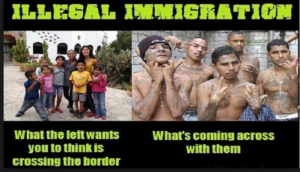 “SOME PUBLIC POLICIES OF ‘LENIENCY’ REGARDING ENFORCEMENT OF FEDERAL IMMIGRATION LAWS’. My, my, a “Catholic” publication using a little rhetorical deception…I am shocked! No, ‘National Catholic Register’! It is NOT “leniency regarding law enforcement”! IT IS FLAT OUT DEFIANCE OF LEGAL AND LEGITIMATE POLICIES AIMED AT PROTECTING THE CITIZENS OF A SOVEREIGN NATION!
“SOME PUBLIC POLICIES OF ‘LENIENCY’ REGARDING ENFORCEMENT OF FEDERAL IMMIGRATION LAWS’. My, my, a “Catholic” publication using a little rhetorical deception…I am shocked! No, ‘National Catholic Register’! It is NOT “leniency regarding law enforcement”! IT IS FLAT OUT DEFIANCE OF LEGAL AND LEGITIMATE POLICIES AIMED AT PROTECTING THE CITIZENS OF A SOVEREIGN NATION!
“If immigrants know there is a standing policy that local leaders have taken time to implement, a policy to respect their civil rights, to promote practices that treat them in a humane manner and with dignity, I think they tend to feel welcome, and I think that’s the most important thing,” said Christy Williams, an advocacy attorney with Catholic Legal Immigration Network Inc.
Catholic Church seems to have a lot of “advocates” who claim concern for “legal immigration”. Seems there’s a whole lot of dishonesty sprouted by these “devout Catholic advocates”.
The U.S. bishops do not support policies that prioritize law enforcement ahead of other aspects of immigration reform. According to an August 2013 document posted on the U.S. bishop’s website, “The United States Conference of Catholic Bishops (USCCB) opposes ‘enforcement only’ immigration policies and supports comprehensive immigration reform.”
Another way to say it is “the USCCB prioritizes illegality ahead of enforcement of legitimate policies and laws.”
Trump Takes Aim
Shortly after taking office in January, the president signed an executive order vowing to strip some federal funds from sanctuary jurisdictions, which the order says “willfully violate federal law in an attempt to shield aliens from removal from the United States.”
And, in a Feb. 16 news conference, Trump vowed to launch a “crackdown on sanctuary cities.” He said a “nationwide effort to remove criminal aliens” had begun and that he had ordered an end to the “catch-and-release policy” that he said allowed illegal aliens caught by authorities to go free while awaiting a court hearing.
The president also announced the creation of “a new office in Homeland Security dedicated to the forgotten American victims of illegal immigrant violence, of which there are many.”
Sanctuary cities “breed crime; there are a lot of problems,” Trump told Fox News in February. “If we have to, we’ll defund.”
Trump’s order also says sanctuary cities “have caused immeasurable harm to the American people and to the very fabric of our republic.”
But on April 25, a federal judge in San Francisco temporarily blocked the executive order, ruling that the president had overstepped his powers since only Congress could place such conditions on spending. The ruling by Judge William Orrick applies nationwide.
U.S. Bishops Response
The president’s executive order drew sharp rebukes from Church leaders. Bishop Joe Vásquez of Austin, Texas, the chairman of the U.S. bishops’ Committee on Migration, released a Jan. 26 statement where he said the order risked injuring local relationships between migrant communities and law enforcement and would force local jurisdictions to accept a “one-size-fits-all” approach to immigration policy.
“I have enormous respect for and value our federal law enforcement agents who risk their lives every day to enforce our immigration laws,” the bishop said. “I also recognize that there may well be situations where local governments feel they need to foster a relationship with their communities by working with the victims of or witnesses to crime without instilling a fear that, by coming forward, they or their family members will be handed over to immigration authorities.”
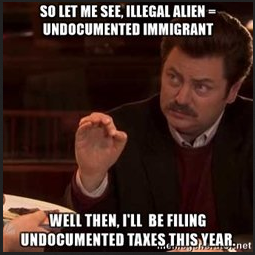 This is about as incoherent as it gets. The sanctimonious bishop says he has all this “enormous respect for” and “values” the agents who enforce our immigration laws but then, in effect, says what they are doing is failing to “foster a relationship” that protects those who violate those immigration laws. Oh well, that’s OK, he’s a “holy man”.
This is about as incoherent as it gets. The sanctimonious bishop says he has all this “enormous respect for” and “values” the agents who enforce our immigration laws but then, in effect, says what they are doing is failing to “foster a relationship” that protects those who violate those immigration laws. Oh well, that’s OK, he’s a “holy man”.
Other bishops have also recently spoken out against laws intended to punish sanctuary cities. Bishop Joseph Kopacz of Jackson, Mississippi, issued a statement on Feb. 15 opposing a bill that would prohibit cities and universities from declaring themselves as sanctuaries for immigrants without legal documents.
“The bill is flawed and not needed,” Bishop Kopacz said.
“IMMIGRANTS WITHOUT LEGAL DOCUMENTS”…SO SAYETH BISHOP KOPACZ!
The Texas Conference of Catholic Bishops similarly condemned a new law passed in late April that will punish local police officers if they do not cooperate with detainer requests issued by U.S. Immigration and Customs Enforcement (ICE). The Texas law also enables local police to inquire into the legal status of anyone arrested or detained.
“Immigration law should be enforced in a way that is targeted, proportional and humane. This bill does not meet the standard,” said Cardinal Daniel DiNardo of Galveston-Houston, who is also the president of the U.S. Conference of Catholic Bishops.
Cardinal DiNardo another immigration law expert . . . “Targeted, proportional humane” . . . how is stopping those intent on illegal entry at the border not targeted? How is returning people across the same border they jumped not proportional? How is leaving room for the more destitute who are quotaed out, denied their turn, elbowed out by those who violate our laws not humane? Indeed what is humane about illegal immigration?
Sanctuary Cities and Crime
Among some policies, sanctuary cities may instruct their local police departments not to ask for or report someone’s immigration status to U.S. Immigrations and Customs Enforcement if they were stopped or detained for other reasons. In some sanctuary cities, service providers such as schools and community health care centers may also have a set policy of not asking anyone’s immigration status.
The idea, immigration advocates say, is that a sanctuary city’s policies make it easier for immigrants who are in the country illegally to feel safe and able to go about their lives without the threat of being deported. Advocates also suggest that those policies make it more likely that immigrant communities will report crimes to local police.
“In the long run, it makes communities less safe, not more safe, if you force their local police to enforce federal immigration law,” said Kevin Appleby, the international migration policy director for the Center for Migration Studies, a Catholic think tank founded by the Congregation of the Missionaries of St. Charles Borromeo
“If you break that trust, then you’re not going to be able to solve crimes or to identify potential criminals because people won’t talk to you,” said Appleby, a former official with the U.S. Conference of Catholic Bishops who told the Register that statistics show sanctuary cities experience less crime than most jurisdictions.
There’s a “position” right out of the Democratic Party’s fake news playbook. Just about every city police department of any size has anonymous “crime stopper” reporting and bilingual capabilities
Even though some data analysis supports Appleby’s argument, the Trump administration and opponents of illegal immigration say that sanctuary cities make it easy for violent individuals and gang members, who are not supposed to be in the country to begin with, to evade detection by federal immigration authorities. The critics point to several highly publicized incidents where illegal aliens have committed horrific crimes, such as murder, rape, shootings, armed robberies and assaults.
“I care about the victims, and I’ve met a lot of the victims of these crimes, and I almost never hear my church talk about the victims of criminal aliens — almost never,” said Marguerite Telford, a spokeswoman for the Center for Immigration Studies, a Washington, D.C.-based think tank that supports a stricter national immigration policy.
Telford, a Catholic, told the Register she does not agree with the approach of bishops and other Church officials who emphasize assisting immigrants at risk of deportation over border security, national sovereignty and public-safety concerns.
“I don’t understand why the bishops don’t have a heart for those impacted by the United States having open borders, with no vetting, and allowing people to be in this country whom we know nothing about,” said Telford.
Legal Challenges
In January, San Francisco became the first city to sue the Trump administration over the executive order on constitutional grounds. Since then, at least five other local governments have also sued.
Judge Orrick’s April 25 ruling is a temporary injunction until the judge issues a broader ruling on the executive order’s constitutionality. But in his order granting temporary relief to San Francisco and Santa Clara County, the judge indicated that the plaintiffs are likely to win a permanent victory in the case.
Keep that name in mind…”Judge Orrick”…he is after all the last word on United States immigration law! That constitutionally-elected president stuff…what’s that all about?
The judge’s ruling casts a skeptical eye on the Trump administration’s plan to tie all federal funding to a community’s policy on immigration matters. “If there was doubt about the scope of the order, the president and attorney general have erased it with their public comments,” Orrick wrote, referring to remarks indicating the administration would interpret the order broadly.
“Reading the opinion, it’s clear the court took much of the language of the press secretary, the attorney general and the president very seriously when they deliberated and wrote the opinion,” said Ashley Feasley, policy director for the U.S. bishops’ Migration and Refugee Services, referencing the judge’s citations of past statements by administration officials about getting sanctuary cities to fall in line.
Said Feasley, “I think it is language that understandably concerns both community government leaders and immigrant communities because it’s very strong. I think it also has given an opportunity for certain communities to show leadership on the issue by being inclusive and welcoming communities.”
However, Center for Immigration Studies director Mark Krikorian, who supports Trump’s immigration policy, says the impact of Orrick’s decision is actually quite limited.
“The ruling is 90% hype and 10% substance,” Krikorian told the WMAL radio station April 26, “because it doesn’t actually stop the administration from doing what it was actually planning on doing anyway, which is cutting off funding for certain Justice Department programs.”
According to Krikorian, the administration can withdraw grants in these programs from sanctuary cities despite the ruling by Orrick, who served as a fundraiser for President Barack Obama prior to being appointed as a federal judge in 2013. That’s because the programs clearly stipulate that grant recipients can’t interfere with their employees communicating with immigration authorities, as Orrick’s ruling itself acknowledges.
Moreover, Krikorian said, the administration doesn’t intend to cut off funding from sanctuary communities in areas unrelated to immigration, so the threat to rule any such actions unconstitutional has little practical effect. “This really was a political statement by a politician pretending to be a judge.”
California’s Situation
A considerable part of the sanctuary movement is occurring in California, which Trump said was “out of control” in his February interview with Fox News. The U.S. Justice Department warned the Golden State that it could lose more than $18 million in federal funding.
A snapshot of the scope of the California situation was provided in a brief released in late April by the Education Trust-West advocacy group. According to the brief, 1 in 13 California residents is undocumented, comprising 20% of all undocumented persons in the U.S.
And 750,000 students in the state’s K-12 schools, or about 12% of all students, have an undocumented parent.
“It’s a challenge. We want to protect those undocumented people who are working and part of the vibrant communities of California. But at the same time, we’re not in favor of and don’t wish to be supporting keeping serious and violent felons in the communities,” said Ned Dolejsi, executive director of the California Catholic Conference.
Dolesji told the Register that the California bishops support S.B. 54, a state bill that would prohibit local and state law enforcement agencies from using their resources to help federal immigration enforcement. Dolesji added that the conference is unsure how the president’s executive order effects the California Trust Act, a state law passed in 2013 that limits the state’s cooperation with a program aimed at sharing information between local law enforcement and immigration authorities.
“From the Catholic Conference’s standpoint, we want the undocumented people protected. We don’t want mass deportations to occur here. We’re trying to accompany people and provide legal services, support and encouragement to folks,” Dolesji said. “At the same time, we recognize that it’s important to remove serious violent felons and the need for some type of relationship between local law enforcement and ICE. How we get there is going to be an interesting struggle.”
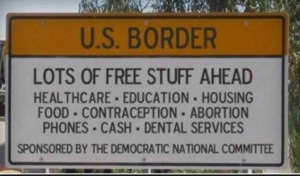
Give credit where it is due : “and sponsored in part by the US Catholic Bishops”
Who needs a translation of this?: “We’re really, really good folks. It’s just that some laws we’re OK with and some we’re not. The latter we just won’t comply with…but we are good folks. Don’t forget that. And if it were a law we liked and you didn’t well we would sanction you for not obeying ‘cuz the law needs to be respected. Got that?
—————————————-******************************________________
List of major sanctuary cities in the United States:
Austin, Texas Baltimore, Maryland Chicago, Illinois Dallas, Texas Denver, Colorado Detroit, Michigan Houston, Texas Los Angeles, California Miami, Florida Minneapolis, Minnesota New York, New York Phoenix, Arizona Portland, Oregon Salt Lake City, Utah San Diego, California San Francisco, California Seattle, Washington Washington, D.C.
“Sanctuary city” is a name given to a city in the United States that follows certain procedures that shelter illegal immigrants. These procedures can be by law or they can be by action. The term most commonly is used for cities that do not permit municipal funds or resources to be applied in furtherance of enforcement of federal immigration laws. These cities normally do not permit police or municipal employees to inquire about one’s immigration status. The designation of “sanctuary city” has no legal meaning.
DLH
- only first picture, in part, was part of original NCR story. The rest were imparted by v’pac and not in original.
